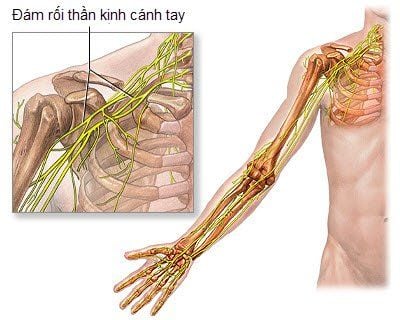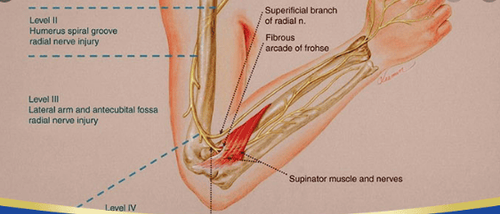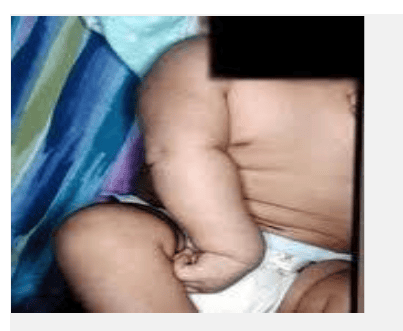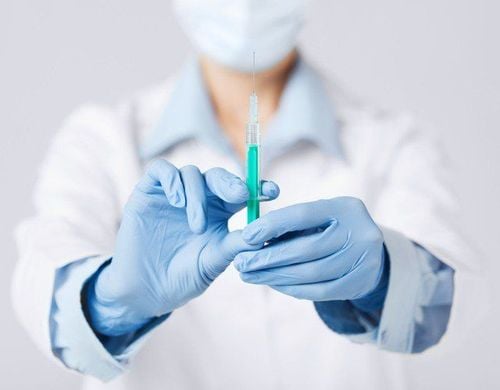This is an automatically translated article.
Article by Master, Doctor Vu Duy Chinh - High-tech Unit for Treatment of Cerebral Palsy and Autism - Vinmec Times City International Hospital
Injury to the brachial plexus in infants at birth causes paralysis or weakness of the upper extremities and loss of sensation, followed by sympathetic nerve changes, soft tissue contractures, and limb deformity. Clinical manifestation is that the child has weak or no movement of the arm, leg, hand side paralysis, soft, flabby muscles, accompanied by a decrease or loss of sensation in the skin of the arm, forearm, and hand. Corresponding nerve roots are damaged.
Recently, Vinmec International General Hospital had a case of a 1-month-old pediatric patient who was successfully examined, diagnosed and treated - rehabilitated:
“A 1-month-old female patient with difficult birth, low birth weight birth weight 3.7 kg. After giving birth, mild purple swelling of the left shoulder area was detected and there was a decrease in left hand movement, the patient was examined and preliminary diagnosed brachial plexus injury at the provincial hospital, then the family had take the baby to see Ths.Bs. Vu Duy Chinh - Vinmec Times City International General Hospital for examination and treatment consultation. After being questioned by the doctor, examined and evaluated the clinical condition, the patient was assigned to take an MRI of the brachial plexus with a 3 Tesla magnetic resonance machine, and electro-neuromuscular assessment of the hand muscle groups at VINMEC hospital. The results of MRI and electroneuromuscular imaging came to the conclusion that the patient had contusion, partial rupture after the C5, C6 root ganglia and the middle trunk with partial fibrosis of the nerve roots in the affected area. The patient did not have an indication for surgery, so he was treated with oral drugs and physical therapy-rehabilitation including: electrical impulses to stimulate neuromuscular muscles combined with exercise to restore muscle function and stimulate After 3 weeks of treatment, the patient has had very good clinical improvements, the child can raise his hand to face height, grasp objects quite well, shoulder and arm muscle groups. , the forearm is no longer atrophied as before the treatment.”
1. Manifestations of brachial plexus injury in children
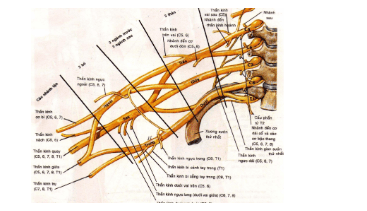
The brachial plexus is a network of nerves originating in the superior cervical and thoracic spinal cords that conduct nerve impulses from the spinal cord to the shoulders, arms, and hands.
Injury to the brachial plexus in newborns is common in cases of difficult birth, high birth weight babies, breech delivery (breast position, head back),... causing paralysis or weakness of upper extremities and muscles. decrease, loss of hand feeling. As a result, infants experience significant loss of function in using the paralyzed hand and impairment in two-handed activities. The force acting on the nerve plexus can cause damage to the upper root (C5,C6) called Erb paralysis, if damage to the lower root (C7,C8,N1) causes paralysis of the muscles in the hand called paralysis Klumpke style. Many neonates present with mixed upper and lower root paralysis.
Clinical manifestation is that the child has weak or no movement of the arm, leg, hand side paralysis, soft, flabby muscles, accompanied by a decrease or loss of sensation in the skin of the arm, forearm, and table. The corresponding hand nerve root is damaged.
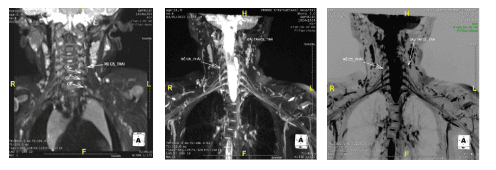
2. Abnormal findings in children with brachial plexus injury
Newborns, after a difficult birth, are observed lying disproportionately with one arm with reduced laxity instead of holding the newborn's flexed arm position. In upper arm paralysis, the following muscle groups may be affected: the obliques, the levators, the anterior serratus, the substantia nigra, the supraspinatus, the subspinous, the biceps brachii, the wings. rotator cuff, biceps, supraclavicular and wrist extensor muscles, long fingers and thumbs. In the forearm, the following muscles may be affected: The extensors of the wrist and fingers, and the intrinsic muscles of the palm that cause the forearm to turn, the wrist and fingers flex.
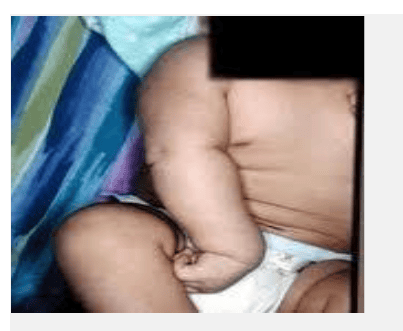
Weakness or paralysis causes the muscles to work compensating to produce adaptive movement performance. Performance of movements such as balance activities while sitting and manipulating with two hands, as well as activities of the paralyzed arm are affected.
The dyskinesia occurs as a result of a combination of paralysis and muscle weakness, the actions of the fully innervated muscle are not accompanied by the action of the antagonist muscles and the functional imbalance. When the infant tries to reach for the toy, adaptive motor behavior becomes apparent, the infant has flexion, lateral rotation, and weakness in the supraclavicular muscles. The shoulder level allows the child to reach forward with the arms internally rotated and prone.
Loss or loss of sensation can occur in the lateral margin of the arm, forearm, or hand depending on the location and extent of nerve root damage but is less common than loss of movement. Where sensation is completely lost in total paralysis of the entire arm, all sensations - pain, temperature, touch, and depth sensation (somatosensory) are lost.
3. Treatment and rehabilitation
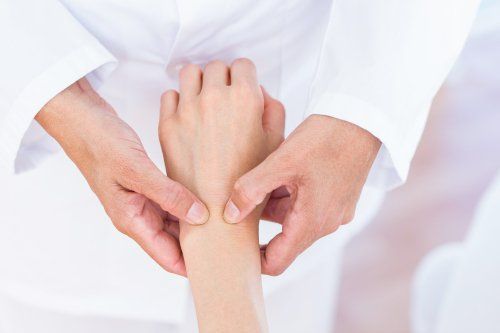
Depending on the location of the injury and the extent of damage to the nerve roots, the patient will have different manifestations of paralysis and different treatment directions.
Surgery: Surgical intervention is indicated when the damage completely breaks the nerve roots, bundles, and fibers. Clinically, the child shows complete paralysis of muscle groups controlled by nerves. Surgical methods include: Nerve splicing, grafting and conversion, in addition, muscle transfer surgery can be used in late treatment when nerve splicing is not effective to restore the patient's function.
Conservative treatment and rehabilitation:
With incomplete injuries such as: Interruption of nerve flow, stretching damage, rupture, tearing part of roots, nerve fiber bundles... the patient will be Preservation options first. Treatment methods include: Oral support combined with physical therapy - rehabilitation.
The main goal of physical therapy is to ensure optimal conditions for the restoration of motor function, to create the necessary environment for the muscles to function again as soon as nerve reactivation has been achieved. occurs and to train motor control. Prevent soft tissue shrinkage and bone deformity; prevent adaptive motor behavior; and prevent amnesia.
Injury to the brachial plexus in infants at birth causes paralysis or weakness of the upper extremities and loss of sensation, followed by sympathetic nerve changes, soft tissue contractures, and limb deformity. Consequently, infants, with significant functional loss, have difficulty reaching and using the paralyzed arm and impaired in two-handed activities. Prognosis depends mainly on the severity of the injury, the time when the child is detected and early or late intervention. Recovery potential is also influenced by disuse of the paraplegic limb, soft tissue contractility, and the nature and intensity of rehabilitation exercise.
With over 17 years of experience, Dr. Vu Duy Chinh is especially famous in the field of Neurological Rehabilitation, Trauma and Pediatrics: cerebral palsy, autism, bladder and anal musculoskeletal disorders, trauma spinal cord injury...
Besides, the Pediatrics Department at Vinmec International General Hospital is always a reliable address for receiving and examining diseases that infants and young children are susceptible to: viral fever, bacterial fever, otitis media, pneumonia in children, ... With modern equipment, sterile space, minimizing the impact as well as the risk of disease spread. Along with that is the dedication from the doctors with professional experience with pediatric patients, making the examination no longer a concern of the parents.
To be examined and consulted at the Pediatric Department of all hospitals in the Vinmec Health System nationwide, please make an appointment in advance on the website.
Please dial HOTLINE for more information or register for an appointment HERE. Download MyVinmec app to make appointments faster and to manage your bookings easily.
SEE MORE
Brachial plexus anatomy Anesthesia of the brachial plexus axillary Learn about radial neuropathy





